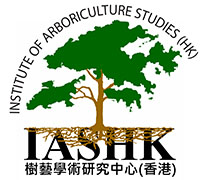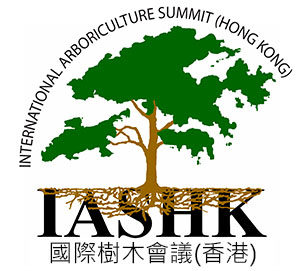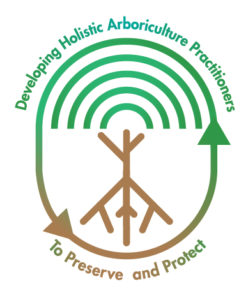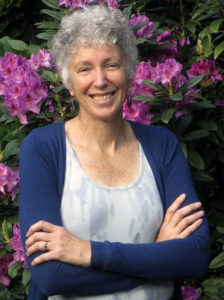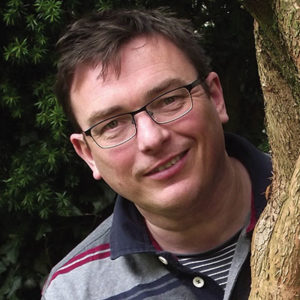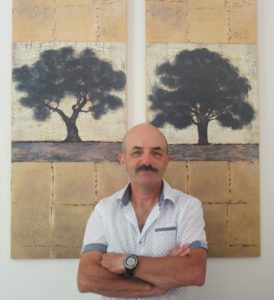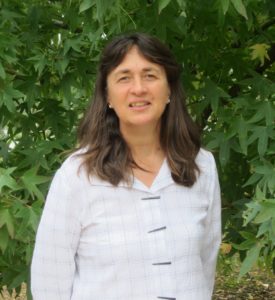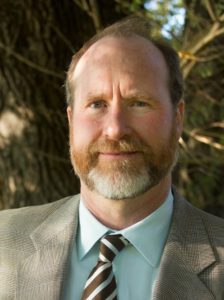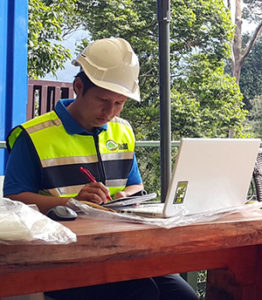Celebrating 10 Years of Arboriculture Programmes, 2008-2017
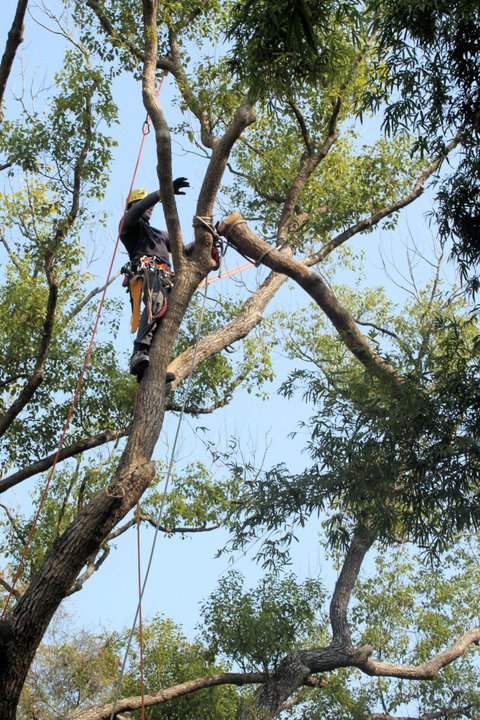
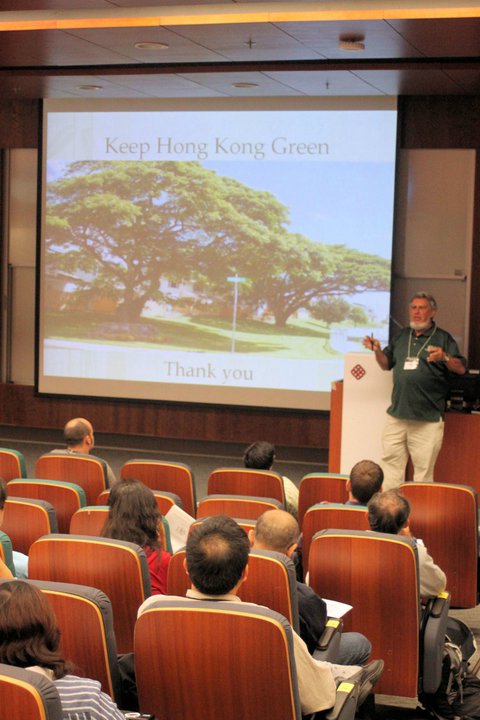
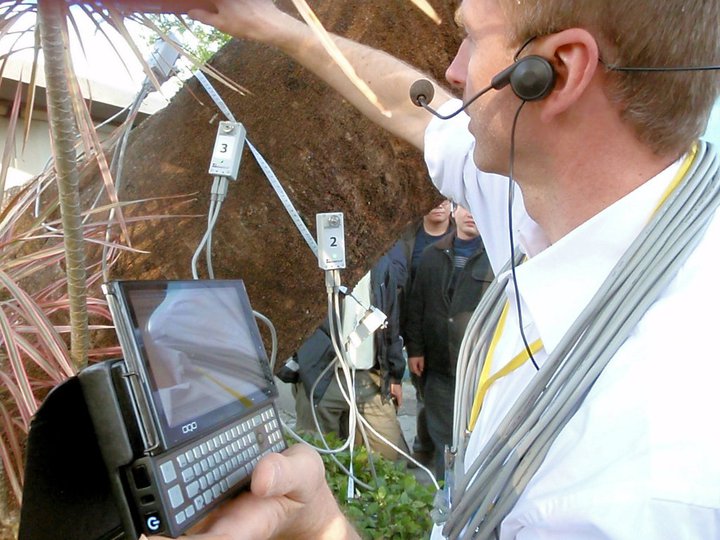
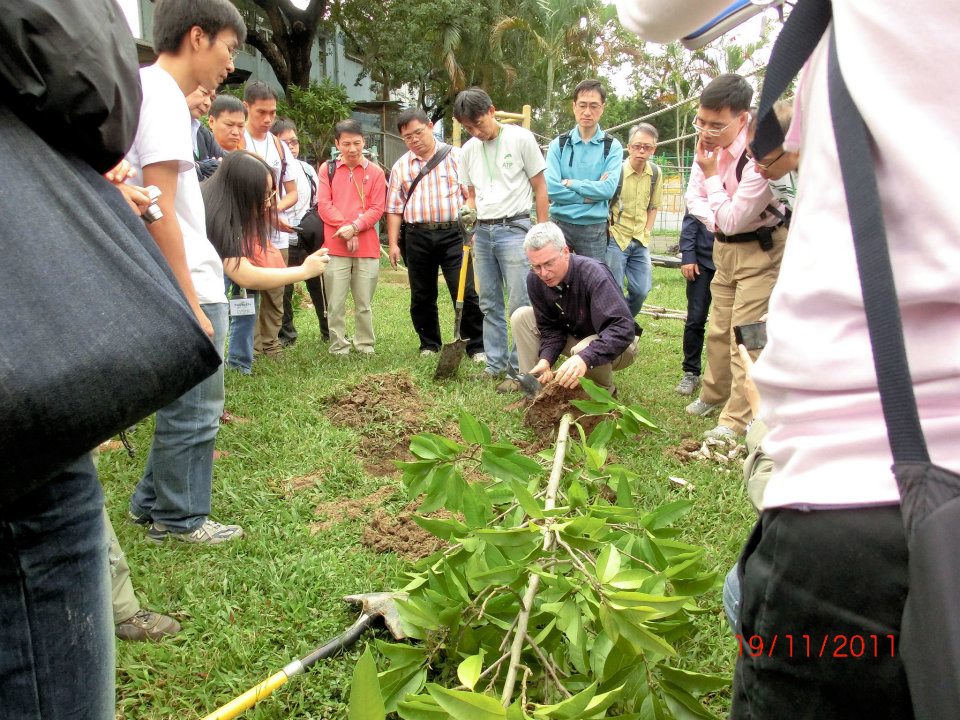
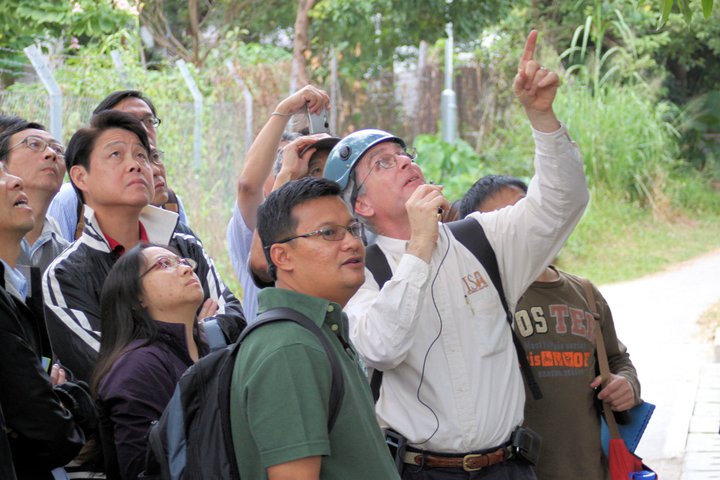
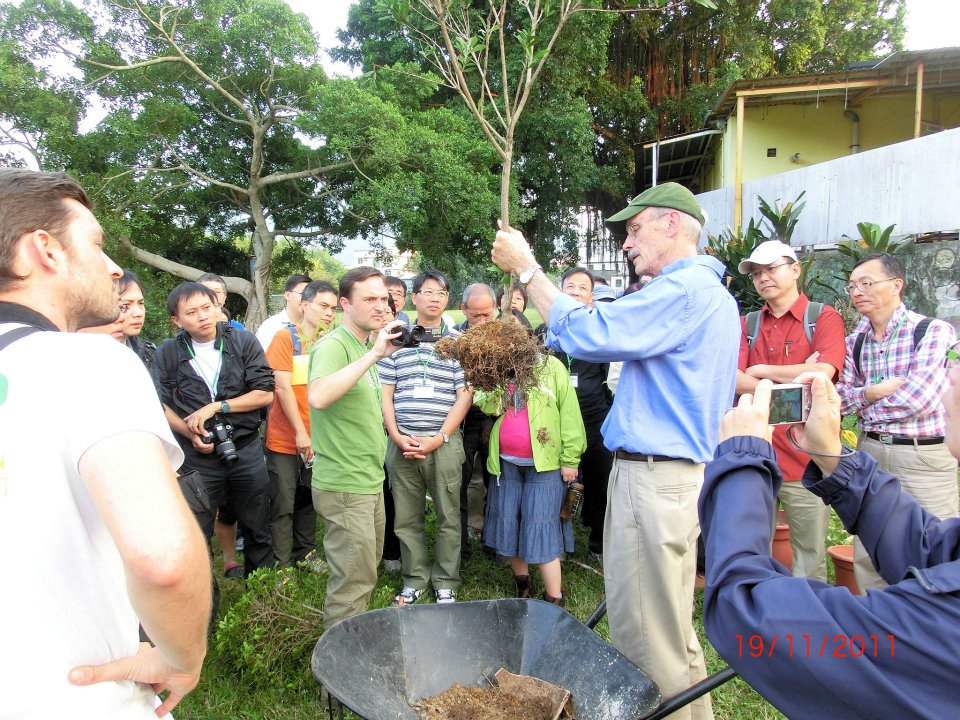
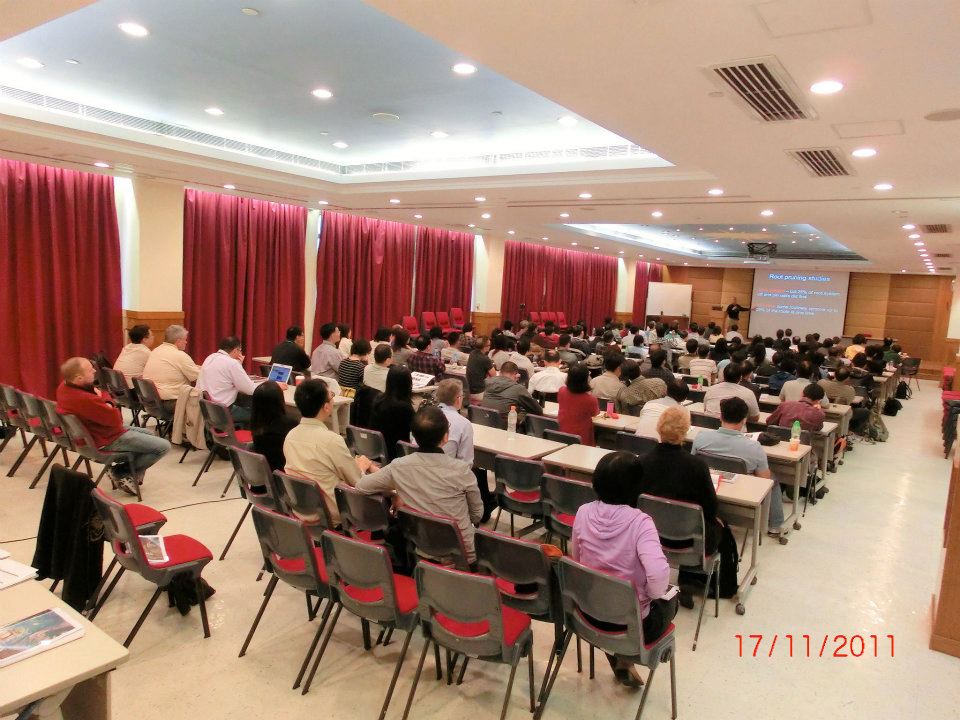
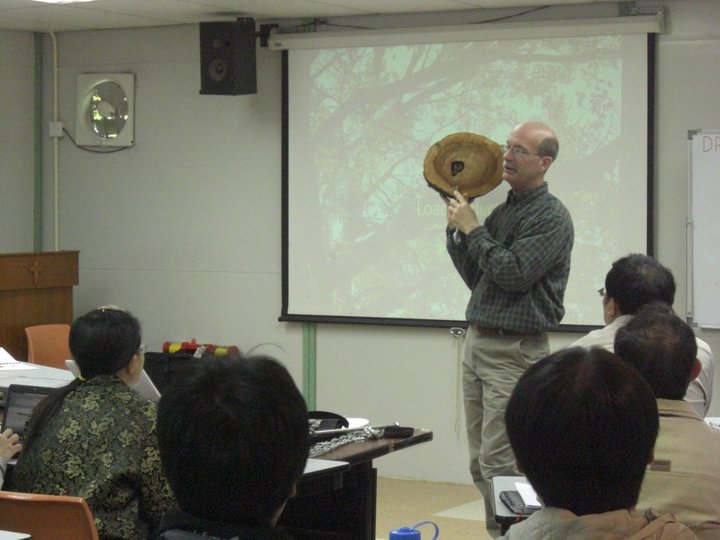
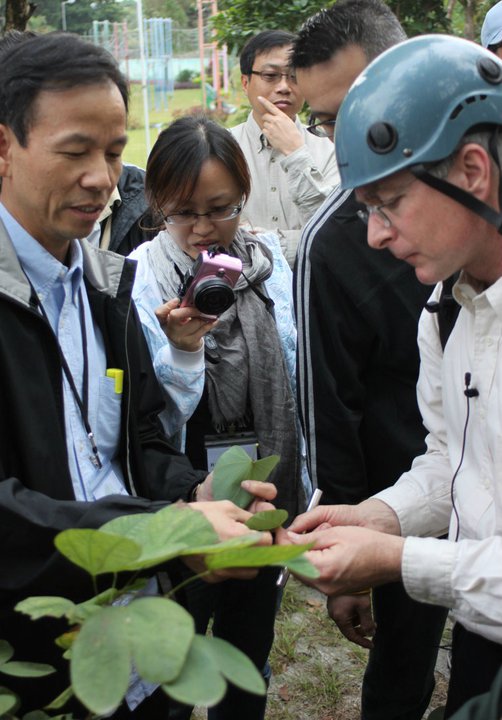
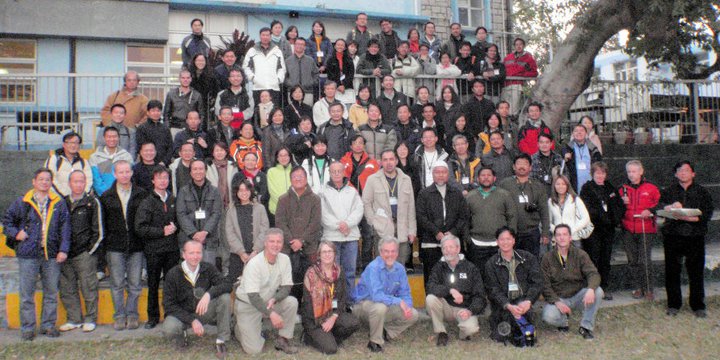
This November 2017, we are celebrating our 10th anniversary of education programmes. It’s going to be a great event! We are also glad to announce a new venue for this year’s summit. It will be held at the convenient location of IVE, Shatin Campus.
Summit Details
The 10th Anniversary
IASHK: International Arboriculture Summit (Hong Kong)
Celebrating Our Trees – Developing Holistic Arboriculture Practitioners to Preserve & Protect
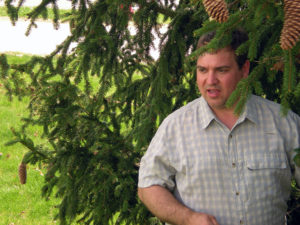
November 13-15, 2017
Venue: The Institute of Vocational Education (IVE), Shatin Campus
Hosted by: IASHK: Institute of Arboriculture Studies (HK)
Co-Organizer: IVE: Institute of Vocational Education
Who Should Attend?
Each year, we are pleased to have attendees from all around the Asian region. This includes individuals from both government and private sectors – tree and forest consultants, landscape architects, city planners, environmental managers of the construction industry, forest researchers, arboriculture educators, landscapers, private business owners, arborists, urban foresters, and government staff of various levels and countries.
If trees are a part of your passion or career, you should attend.
What to Expect at the Summit
The summit will consist of both indoor lecture and outdoor field training. Lectures will be supported by powerpoint slides. There will also be plenty of time for question and answer as well as networking opportunities. For field training, groups will go outside to view and discuss trees on the campus. IVE has a few hundred trees, so the lecturers will have many real examples for discussion and interaction.
IASHK Mission
Like a tree, Arboriculture Methodology is constantly changing and growing. Researchers, educators, and experts from around the world work together to test new theories and new practices and to disseminate these new findings to arborists around the world. The purpose of the International Arboriculture Summit is to help present those new practices and technology together with the core fundamentals of arboriculture to the arborists within our region, so that we all may grow together in our own understanding and practice.
Summit Educators
Dr. Rich Hauer, University of Wisconsin, Stevens Point, USA
Rich is an associate professor of Urban Forestry at the University of Wisconsin–Stevens Point. He teaches courses in urban forestry, introductory forestry, nursery management and operations, woody plants, and dendrology. Rich has conducted research in tree biology, urban forest management, trees and construction, and ice storms and trees for more than 20 years. Rich has published 90+ popular and peer-reviewed papers and presented more than 200 professional talks. His unique style and anecdotes are thought-provoking.
Rich has the following degrees: a Ph.D. Forestry, University of Minnesota, an M.S. Tree Biology/Urban Forest Health, University of Illinois-Urbana/Champaign, a B.S. Urban Forestry/Botany, University of Wisconsin-Stevens Point. and an A.A.S. Horticulture Technology, University of Minnesota-Waseca
Mark Duntemann, Natural Path Urban Forestry, USA
Mark is the owner of Natural Path Urban Forestry Consultants, a consulting business he started in 1988. He achieved a Master’s of Science in Forestry, with an emphasis on urban forestry, from the University of Wisconsin – Madison and a Bachelor’s of Science in Forestry from the University of Montana. Mark is an International Society of Arboriculture (ISA) Board-Certified Master Arborist (RM 131B) and instructor for the ISA’s Tree Risk Assessment Qualification. In addition to his TRA qualification, he maintains a tree assessment certification from the UK-based Arboricultural Association and recently held the Quantified Tree Risk Assessment (QTRA) certification. Mark is the ISA representative to the seven-member, Council of Tree and Landscape Appraisers (CTLA), currently tasked with developing the 10th Edition of the Plant Appraisal Guide. He received the ISA’s True Professional Award in 2016.
Mark’s primary focus is on developing tree risk management policies for government agencies and private sector companies. He provides tree risk management guidance on projects in North and South America, Asia and Europe. He presents internationally on topics of tree risk and urban forestry policy development and is currently researching a book on the topic of tree risk management. Mark serves as an expert witness in numerous tree-related litigation cases and uses this experience to inform his perspective on tree risk.
Dr. Linda Chalker-Scott, University of Washington, USA
Dr. Linda Chalker-Scott has a Ph.D. in Horticulture from Oregon State University and is an ISA certified arborist and an ASCA consulting arborist. She is WSU’s Extension Urban Horticulturist and an Associate Professor in the Department of Horticulture, and holds two affiliate associate professor positions at University of Washington. Linda is the author of four books: the award-winning, horticultural myth-busting The Informed Gardener (2008) and The Informed Gardener Blooms Again (2010) from the University of Washington Press and Sustainable Landscapes and Gardens: Good Science – Practical Application (2009) from GFG Publishing, Inc. Her most recent book, How Plants Work: The Science Behind the Amazing Things Plants Do from Timber Press (2015), has received numerous national awards [American Horticultural Society best book award, best book award from the National Association of Agricultural Agents, and a National Science Teachers Association recommended book]. Most recently she is co-authoring an update of Art Kruckeberg’s Gardening with Native Plants of the Pacific Northwest (UW Press), slated to be published in 2018. Her efforts were recognized in 2017 by the Association for Garden Communicators who awarded her their first Cynthia Westcott Scientific Writing Award.
Dr. Duncan Slater, Meyerscough University, UK
Duncan is the course tutor for the MSc in arboriculture and urban forestry, both on-campus and on-line at Myerscough College, Lancashire, England. He is a chartered forester (MICFor) and a member of the Arboricultural Association (MArborA).
He specializes in teaching tree management and urban forestry, including the skills of tree and shrub planting, identification, management of pests and diseases of woody plants, and tree risk management. He also teaches woodland management and ecology. He has been teaching on arboricultural topics at Myerscough College, Lancashire, for over eleven years.
Dr. Brian Kane, University of Massachusetts, USA
Brian is the Massachusetts Arborists Association Professor of Commercial Arboriculture at the University of Massachusetts in Amherst, MA. He is an ISA Certified Arborist and serves on the ISA Board of Directors. He previously chaired the ISA’s Science and Research Committee. His research focuses on tree biomechanics and tree worker safety and he has published 39 scholarly articles. Brian has won the ISA’s Early Career Scientist award and the Alex L. Shigo award for excellence in arboricultural education. He has also received a TCIA Safety Citation for research he conducted with the Bartlett Tree Expert Company. Brian spent several years working as a production climber and has competed in tree climbing competitions in New England and New York. In 2006, he placed fourth overall in New England.
Frank Rinn, Heidelberg, Germany
Frank Rinn, inventor of the RESISTOGRAPH® and ARBOTOM®, is world famous as an instructor on tree inspection and can help to make you a more expert arborist. Frank owns RINNTECH, a company that develops equipment for dendrochronology, tree and timber inspection since 1988.
Frank invented and developed different methods, machines, and computer programs for various applications in tree-ring analysis, dendrochronology, tree, and timber inspection, such as resistance drilling, sonic tree tomography & root-plate detection, as well as wood surface density analysis. He was granted several national and international patents and trademarks such as on high resolution and high-precision resistance drilling (RESISTOGRAPH®) and sonic tomography (ARBOTOM®). For his inventions and developments, he received several research and innovation awards (1989, 1992, 1997, 1998, 2004, and 2012). Besides managing RINNTECH (manufacturing, selling, and training), Frank also works as a court registered expert, inspecting trees and timber (structures). In addition, he lectures and has published several dozen papers on various topics.
Since 2001, he serves as voluntary Executive Director of ISA Germany and is on the ISA Tree-Risk Panel of Experts and contributes to the corresponding BMP. From 2011 to 2013 he served on the ISA Board of Directors.
Dr. Giovanni Morelli, Milan, Italy
Dr. Morelli, agronomist and arborist, owner of Progetto Verde since 1994, is a consultant in urban arboriculture, specialized in tree risk and tree stability assessment. He has written numerous articles and he is a lecturer in university courses. He has been speaker at more than 60 national and international conferences or seminars. He is a member of the ISA International Society of Arboriculture (ISA), of the SIA (Società Italiana di Arboricoltura), and of SAG Baumstatik e.V.. He is ISA Certified Arborist, ETT – European Tree Technician, Board Certified Master Arborist (ISA) and TRAQ Qualified (Tree Risk Assessment Qualification).
Dr. Kathleen Wolf, University of Washington, USA
Dr. Wolf is a research social scientist with the University of Washington and with the USDA Forest Service, Pacific Northwest Research Station. As a social scientist her professional mission is to discover, understand, and communicate human behavior and benefits, as people experience nature in cities and towns.
Dr. Wolf says: “Many environmental issues involve complex interactions of bio-physical and human systems. Effective problem-solving requires attention to both dimensions. As B.F. Skinner pointed out, most of the problems we face involve human behavior.
As a research scientist I investigate people’s perceptions and behaviors with regard to urban landscapes. Based on professional experiences early in my career – as an urban forester in South Florida and a landscape architect in the Midwest – I became interested in how natural environments influence peoples’ attitudes, values and actions.
Peter MacDonagh, Minnesota, USA
Peter MacDonagh is the director of design + science for Kestrel Design Group, Inc., specializing in state-of-the-art ecological restoration, urban forestry, stormwater planning, and green roof technologies. He has more than 30 years of experience providing ecological and sustainable site design for stormwater management, lake and river restoration, natural areas management plans, botanical inventories, urban forests, green roof installations, and mining reclamation. Peter is a Registered Landscape Architect and a Fellow of the American Society of Landscape Architects.
LAr. Fariza Firdaus, Malaysia
LAr. Fariza Firdaus is a founder and principal of Raintree Arborist Pvt. Ltd., graduated from Faculty of Design and Architecture, Universiti Putra Malaysia and has been in the landscape industry for more than 17 years. She is currently pursuing a PhD in Tree Appraisal. Prior to that, she graduated from University Putra Malaysia with a Bachelor and Master’s Degree in Landscape Architecture.
She is a corporate member of the Institute of Landscape Architects Malaysia and currently an elected committee member of Malaysian Society of Arborist. Besides her focus in business and continuing studies, she is also active in industry-based society and gives lectures to municipals and contractors.
Being one of two Qualified Tree Risk Assessor in Malaysia, she has assessed more than 1000 trees throughout the country. Municipal Specialist is her latest accolade and she is the first in Malaysia.
Summit Lecture Abstracts
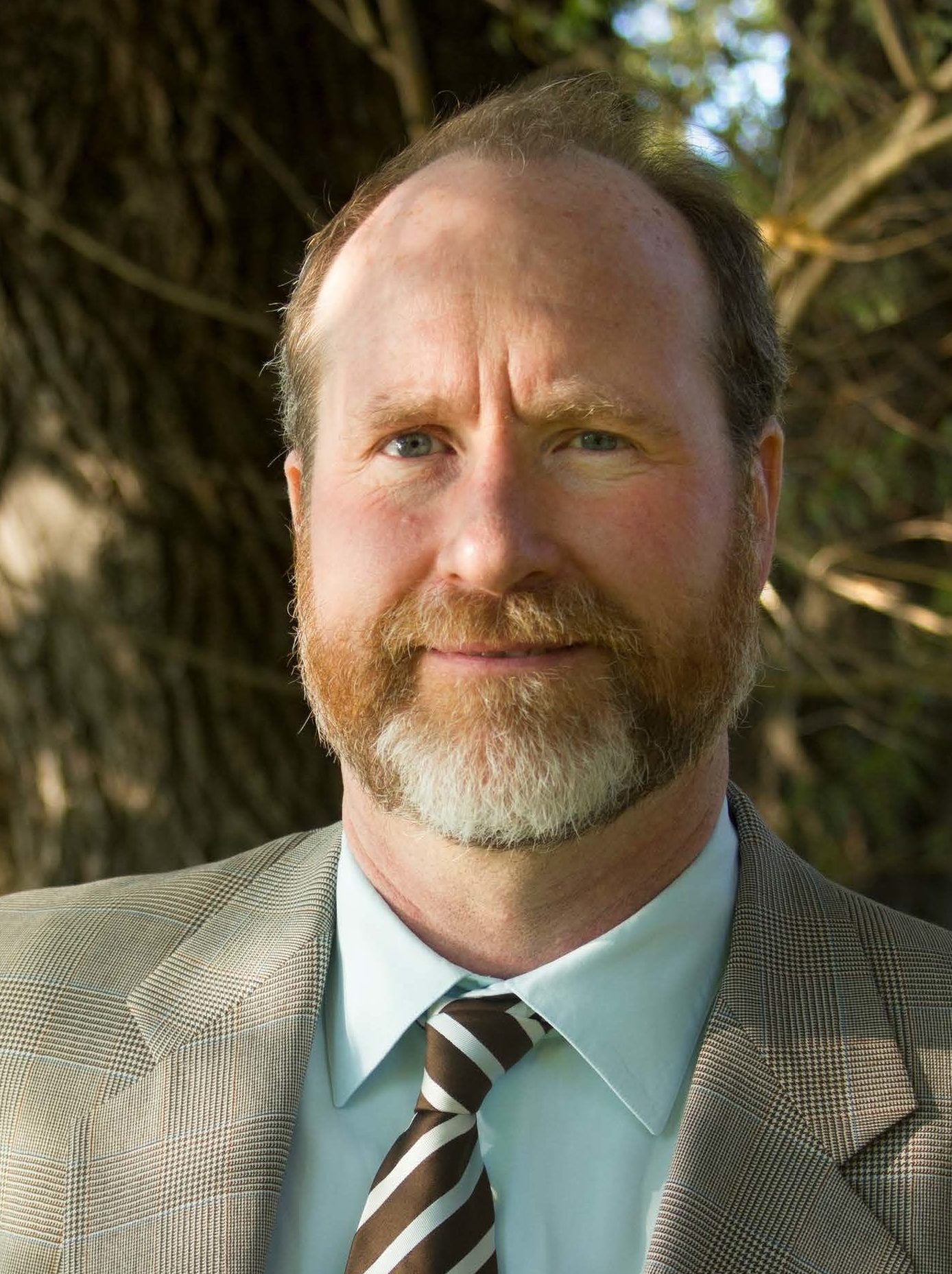
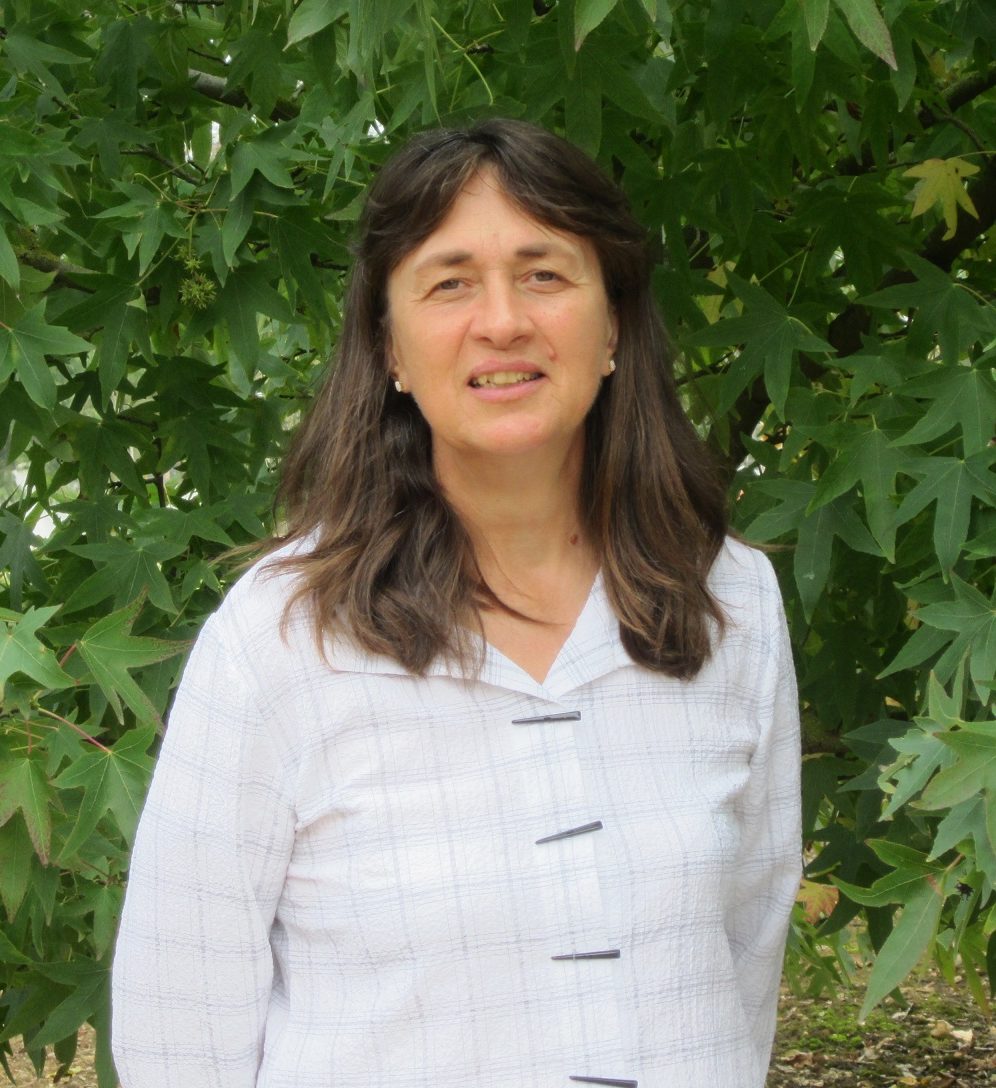
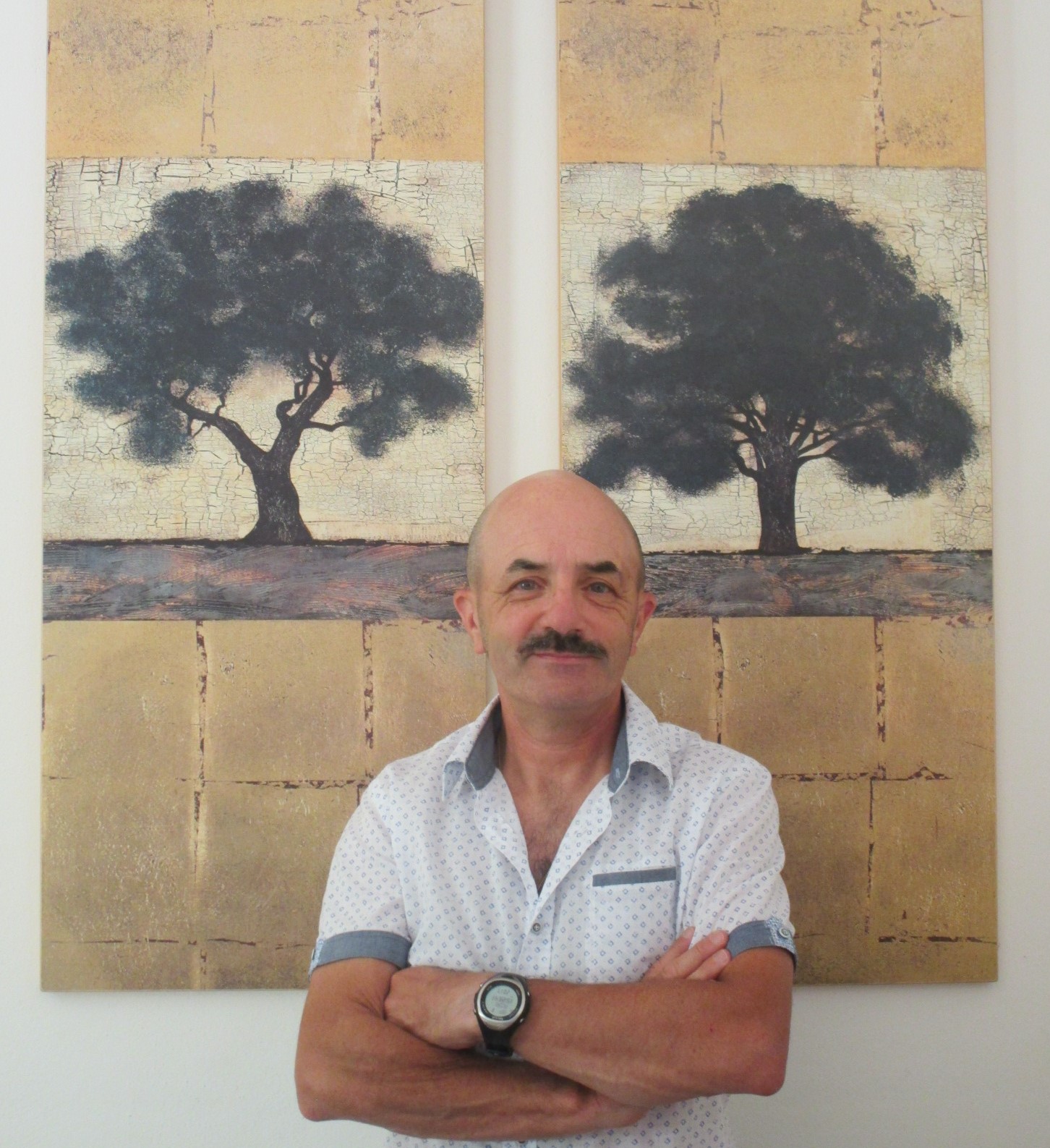
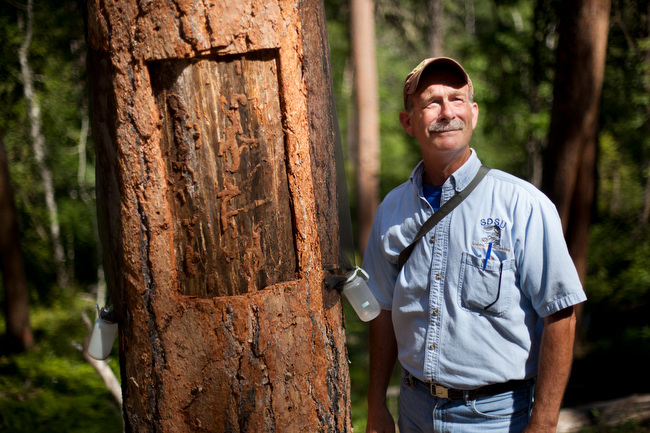
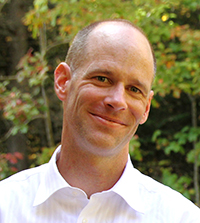
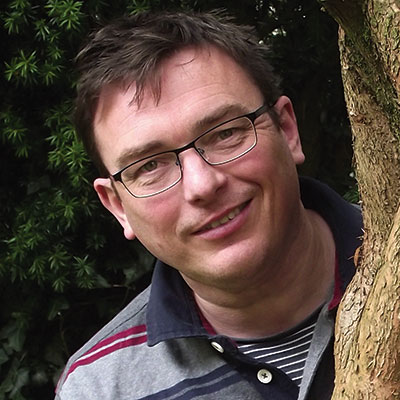
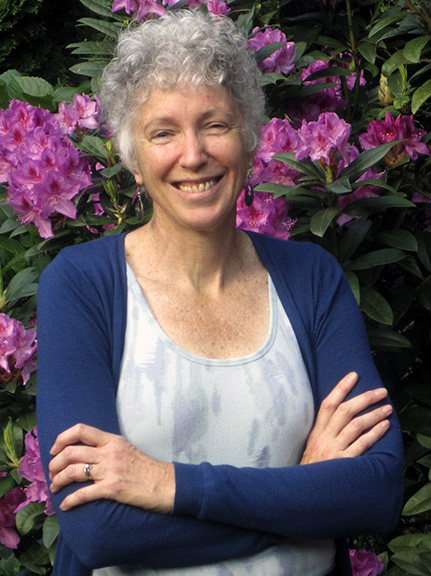
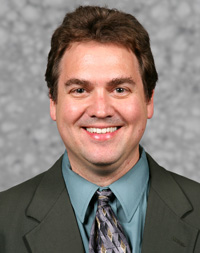
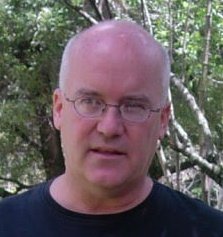
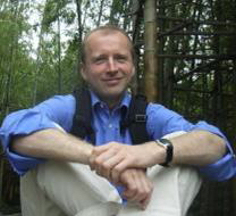
Here is a partial list of topic abstracts for the summit
Arboricultural Biomechanics—How Does Arboricultural Practice Affect the Likelihood of Tree Failure? with Dr. Brian Kane
Understanding the likelihood of tree failure is an important part of tree risk assessment—something arborists do on a regular basis. In this workshop, we will first review basic mechanical concepts like force, moment, and stress that are relevant to understanding the likelihood of failure. Following this review, we will consider how arboricultural practices like pruning, cabling, and rigging, can influence the likelihood of failure. There are no easy answers to this question, but understanding the relevant concepts and some research results will help practitioners better assess the likelihood of failure and what affect arboricultural practices have on it.
Urban forestry research at Myerscough College with Dr. Duncan Slater
This talk highlights research carried out in the last two years by BSc (Hons) and MSc students of Myerscough College, supervised by Dr. Duncan Slater, that directly relate to urban forest practice. Key findings of these studies will be shared, including analysis of damage to trees by their own support and protection systems, the value of ‘Before and After’ pictures of protected trees, trees stunted by urban growing conditions and the outcomes of an investigation into the ideal age diversity of an urban forest.
A New Model For The Anatomy Of Branch Junctions with Dr. Duncan Slater
A recent PhD study carried out at the University of Manchester, through the use of dissections, electron scanning microscopy and CT scanning, has produced a new model for how branches and stems are attached to each other in trees. Dense, tortuous wood formed under the branch bark ridge of a branch junction is a key strengthening component for most of such junctions, with branch-to-stem connections also exhibiting the occlusion of the base of the smaller branch into the larger stem. This talk will outline this new model of branch attachment and its potential use in man-made materials.
The Consequences Of Natural Bracing In Trees with Dr. Duncan Slater
Bark-included junctions in trees are notoriously weak and prone to failure – but what causes them to form? Recent research has identified that the primary cause of bark-included junctions in a wide range of tree species are “natural braces” – branch and stem interactions above a branch junction that greatly restricts the movement and loading to that junction. This talk will introduce this new finding, the ten types of natural brace to be found in trees and what this means for the management of trees with bark-included junctions.
Tree Biomechanics; The Basics Reviewed with Frank Rinn
Understanding the real basic principles of tree biomechanics helps clearing the confusion about the contradictory set of tree-safety hypothesis proposed (but never proven) by VTA and SIA methods.
Real World Safety Thresholds with Frank Rinn
Based on scientific studies, practically proven theoretical analysis and field experience, guidelines for how to assess critical safety thresholds at the tree. This often works even without application of any technical device. However, the proper use of diagnostic technology mostly leads to significantly higher precision in estimates of the likelihood of failure (as one aspect of tree-risk assessment).
Technical Diagnostic Methods For Tree-Safety Inspection with Frank Rinn
Resistance drilling, sonic tomography, and load-tests (tree pulling) are used since decades for safety assessment of urban trees. However, basics, possibilities, and limitations even of the most commonly used technical diagnostic devices seem to be largely unknown or misunderstood (mainly in consequence of the misleading debate between VTA and SIA). Some experts (or expert-groups) use only one of these methods and condemn the other as scientifically unproven. This explains, why so many árborists and tree-experts are confused about what technology to use when, how to interpret the results, and how to evaluate the results in terms of tree-safety. This confusion can only be cleared with a basic understanding, how these methods work and what they can deliver.
Tree Architecture and Morphophysiology with Dr. Giovanni Morelli
The form of a tree is the expression of the dynamic relationship that binds each tree with the environment in which it grows. The form a tree acquired, however, is not simply a reaction to its environment, but also relies on the adherence to principles of tree architecture development. Giovanni will illustrate how these principles change according to the different species and how they evolve following the life of each individual tree. The relationship that links the crown architecture to the organization of the root system will be presented and finally it will be shown how it is possible to relate the architectural characteristics of a tree to biological, physiological and pathological aspects.
Applying the Morphophysiological Approach: Tree Pruning and Tree Stability Assessment with Dr. Giovanni Morelli
Morphophysiology is the discipline that links the tree’s architecture with its biological functioning, with reference to its energetic, hormonal and structural aspects. Morphophysiological analysis is based on the predictability of the evolution of a tree. Observations of its present state, allows one to reconstruct its past and foresee its future development. In this way, the most appropriate diagnostic or arboricultural interventions can be designed to positively affect long-term structure. A case study on a veteran London planetree (Platanus x acerifolia) will be presented.
Support Systems for Large Veteran Trees: Two Case Studies with Dr. Giovanni Morelli
In trees, vegetative vigor and mechanical capabilities are not necessarily related. The morpho-physiological study permits us to understand when, even with serious stability problems, a veteran tree could have a long aesthetic and functional life, providing multiple benefits to the community. In such cases, it may be necessary to provide permanent support structures which, however, do not interrupt the tree’s relationship with the surrounding physical environment. At the same time, the diagnostic and management programs of these specimens must be revised, enabling their symbiosis with these new situations. Case studies will be presented on the application of these concepts to two veteran Italian trees.
The Human Health Benefits of Urban Forests and Urban Greening with Dr. Kathleen Wolf
The Green Cities: Good Health project at the University of Washington (Seattle) is a summary of nearly 40 years of research about the connections between nature experiences in cities and health outcomes, including the role of city trees and the urban forest. This presentation will be a broad review of some of the most important, and interesting research.
Urban Nature Experiences for Improved Mental Health and Function with Dr. Kathleen Wolf
Poor mental health is on the rise in many nations as a leading public health concern. The challenges of urban living can negatively impact mental health of individuals and communities. This presentation will be a review of current research literature concerning the role of nearby nature in mental health improvements. It will also introduce ideas about how contact with trees and nature improves general cognitive function, including in school and the workplace.
The Economics of Nature-Based Human Health Benefits with Dr. Kathleen Wolf
Various studies point to the environmental services that the urban forest provides, and calculate the economic benefits of better air and water quality, energy savings, etc. Meanwhile, health care and treatment is one of the most expensive costs of both households and nations. Extensive research confirms a wide range of health benefits resulting from people having contact with nature in cities. This presentation will outline key health benefits, and monetization of those nature-based outcomes.
Green Infrastructure – Co-Design for Health Co-Benefits with Dr. Kathleen Wolf
Many cities and firms are adopting green infrastructure as a strategy to achieve greater urban resilience and save money. Green infrastructure systems, including the urban forest, green stormwater infrastructure, and natural areas systems are planned and designed to achieve environmental or ecological performance goals. Yet all land in cities should be co-designed to achieve multiple beneficial outcomes. A wide array of human health benefits are associated with experiences of nearby nature in cities. This presentation will present ideas about how to co-design green infrastructure to promote better human habitat and health, such as better community walkability, safety, and social cohesion.
The U.S. Urban Forest Action Plan – What are Research Needs? with Dr. Kathleen Wolf
The U.S. National Urban and Community Forestry Advisory Council recently released a 10 year action plan for urban forestry in America. A separate Research Needs report addressed the science that is needed to support, sustain, and expand government, private sector, and non-profits actions. This presentation will summarize the practical, community-based research recommendations that were developed from both community and science inputs from across the nation.
Take It All Off! The Bare-Root Method Of Installing Trees And Shrubs with Dr. Linda Chalker-Scott
This seminar will focus on the root problems inherent in containerized and B&B materials, how to avoid problems at the nursery, and how to correct problems you don’t find until you plant. It will demonstrate the best ways to prepare container plants and B&B trees for transplanting. Root washing and corrective pruning is different from conventional methods, yet ongoing research demonstrates that this new procedure leads to substantial increases in tree establishment and survival. Investing the time to prepare and install trees and shrubs properly will pay future dividends of reduced maintenance and increased plant health for the lifetime of your landscape.
Diagnosing Environmental Stresses In Urban Landscapes with Dr. Linda Chalker-Scott
This seminar will present a diagnostic approach to discovering the cause behind landscape tree failure. Urban areas do not function like natural areas or agricultural sites, yet many of our practices are based on this misconception. This seminar will present the types of stresses urban plants face and discuss their symptoms and underlying causes. A better set of plant and soil management practices are suggested as a means to create and sustain healthier urban landscapes.
Roots on steroids: how mycorrhizae work with Dr. Linda Chalker-Scott
You’ve probably seen them before – those white threads too long and slender to be roots, yet intimately associated with the root system of landscape trees. The threads are fungal hyphae, and their association with many plant species are collectively called mycorrhizae. Mycorrhizae are one of the most beneficial relationships trees can have with another organism. This seminar will discuss the benefits of mycorrhizal fungi and explain how you can optimize environmental conditions to ensure healthy populations of these soil microbes. We’ll also consider commercial inoculants and whether scientific research supports their use.
How Native And Non-native Trees Affect Landscape Biodiversity with Dr. Linda Chalker-Scott
Many municipalities now require a certain percentage of native trees and shrubs in new landscape installations. This presentation will summarize the current science regarding the effects of native and nonnative tree species on urban landscape stability. A more practical approach than simply mandating more native species will be suggested.
To Mulch Or Amend? Use Of Organic Material In Permanent Landscape Installations with Dr. Linda Chalker-Scott
This session will explore the use – and overuse – of soil amendments in permanent landscapes. We will discuss the differences between native, urban, and designed soils, discover how much organic matter is natural and sustainable, and finally look at mulching as an alternative means of getting organic matter into the soil. We’ll specifically look at the importance of coarse woody mulch as a necessity for the health of all trees.
Likelihood of Striking a Target: Quantifying Occupancy Rates with Mark Duntemann
Historically, tree risk assessments have focused on the likelihood of a part failure. While important, it is only one of the four factors required to determine tree risk. In this session, Mark will discuss methods for quantifying occupancy rates to more accurately determine the likelihood of an identified target being struck if a tree part fails. The session will include a number of group exercises were occupancy rates will be calculated for a range of scenarios and conclude with a discussion on how this information informs risk prioritization.
The Preservation of the Lake Forest Swamp White Oak with Mark Duntemann
The preservation efforts by the City of Lake Forest, USA for a 280-year old Swamp White Oak (Quercus bicolor) will be discussed. The tree is a remnant of the oak/hickory woodland that predates European settlement to the area in what is now a suburb of Chicago. The tree resided on public land that was recently sold to a developer for the construction of condominiums. The preservation efforts toward the tree is a demonstration of the collective participation required to make such an effort successful. This partnership included the City, the developer, arborists and residents. Mark will discuss the ecologic history of the tree and recent efforts to maintain the tree before, during and after development.
Quantifying Tree Risk Thresholds with Mark Duntemann
Risk cannot be managed within agency without first understanding current risk exposure. Once established an agency or company can then implement policies and procedures that quantifiably reduce risk to a level that is reasonable and practical to maintain. Mark will use this session to discuss the variety of ways, one can identify tree risk exposure by detailing a research project that involves studying the risk exposure of twelve Chicago suburban communities. He will discuss the relevance of identifying risk thresholds and how they assist in developing proactive and defensible risk management policies.
The 10th Edition of the Tree Appraisal Guide with Mark Duntemann
The 10th Edition of the Tree Appraisal Guide is in final review. The Council of Tree and Landscape Appraisers is tasked with developing the appraisal guide. As the ISA representative to the seven-member Council, Mark will discuss the methodologies described in the draft Guide and changes from the 9th Edition. As part of the session, he will provide a review of a number of past cases that will assist appraisers in selecting the most appropriate methodology. The session will conclude appraisal exercise for session participants.
Understanding Tree Risk Assessments in a Risk Management Context with Mark Duntemann
An important distinction between tree risk assessments and risk management exists. The difference, however, is often poorly understood within the arboricultural field. In litigation, this often serves to undermine a thorough discussion on risk and it may not allow for fully informed choices when assessing trees for risk. A tree risk assessment is the technical process in which potential risk and consequences are identified and mitigation options are presented to address those risks. A thorough assessment has four components. Mark will discuss the interrelationship of these concepts and their relevance in our day to day arboricultural practice.
Up By Roots: An Introduction to Technical and Practical Workshop on Trees, Soils and Stormwater with Peter MacDonagh
This is an introduction to the “Up By Roots” Technical Workshop which highlights the practical principles of soil science, in combination with stormwater (for irrigation), to facilitate the growth of large, vigorous, healthy trees, to maturity, in cities. In addition to lectures, this workshop includes hands-on soil exercises, so that workshop participants practically understand and utilize, the underlying scientific principles of tree root growth, and soil/water relations. Upon completion, participants will learn how to successfully plan, design, install, and care for large trees, manage stormwater, and improve soils in cities.
Using Urban Trees for Stormwater Management with Peter MacDonagh
The workshop focuses on the State of Science using Urban trees for Stormwater Management. Stormwater professionals have been studying stormwater control measures for decades, and foresters have been studying and growing urban trees for centuries. But the practice of combining the two to use trees as a Stormwater control Measure is in its infancy. Recent results showing water quality benefits for urban tree/soil systems equal to and surpassing that of many traditional bioretention systems will be presented. As research is rapidly discovering ways to enhance performance of bioretention and urban tree/soil systems, this presentation will also highlight some of the most promising new developments, such as, for example, use of various soil amendments to enhance water quality performance, as well as design strategies to maximize stormwater volume and water quality benefits.
A Holistic History of Trees, People, and Places with Dr. Rich Hauer
Just how much is that tree outside the window, worth? Learning how to place a value on trees is as important as understanding the biologic needs of proper tree care. This talk depicts the variety of ways that trees are valued. We will explore the many economic ways to develop a value, the different systems used around the world, and what is a reasonable valuation. We will explore values through the lens of sustainability concepts using economic, ecosystem, and social values as a guide.
Measuring the Value of Trees with Dr. Rich Hauer
Just how much is that tree outside the window, worth? Learning how to place a value on trees is as important as understanding the biologic needs of proper tree care. This talk depicts the variety of ways that trees are valued. We will explore the many economic ways to develop a value, the different systems used around the world, and what is a reasonable valuation. We will explore values through the lens of sustainability concepts using economic, ecosystem, and social values as a guide.
Human Health and Urban Green Spaces with Dr. Rich Hauer
A dose of trees is what the doctor prescribes. The human health effects of trees is remarkable. Much like the stages of tree development, the stages of human development has many connections to green spaces. We will take a journey into the medical literature and the important holistic connections from birth to the life prolonging effects that trees provide. We will take a forest bath of human health promotion through trees as a prescription to wash away your problems.
Terms, Technology, and Standards of Care: A Biological Basis of Tree Action Part 2 with Dr. Rich Hauer
Lets’ take a journey and explore the how biology is a basis for growing trees in built environments. Trees have limits, and learn the limits to make trees thrive. Terms are a necessity within a field of practice, and an ignorance of terms limits you. This talk will use our terminology as a basis for a conversation in tree care. The technology we develop and use builds upon our terminology basis. Finally, standards of care use what we know to develop as practitioners an acumen for to do something for the tree rather than to the tree. Qualifications and credentials are an end note of a profession and an integral part of building a profession.
Tree Appraisal Methodology in Malaysia with LAr. Fariza Firdaus bte Mohd Salleh
There are many attempts to estimate economic value of trees in Malaysia for various purposes. In the beginning, the Thyer method was used only to valuate the ‘Heritage Trees’ of Malaysia. Currently, the same method is widely used by many municipalities to estimate monetary value for tree compensation. However, this method produces a very high and unreasonable compensation value which is deemed unrealistic and unfavorable by many. Given this scenario, few municipalities developed their own appraisal method for tree compensation. This presentation will discuss these methods and compare their effectiveness in estimating tree monetary value.
Summit Schedule
This year we have developed a new scheduling system. On Monday, this is a set schedule and everyone is together for this day.
For Tuesday and Wednesday, we have more options for people to choose. Attendees can choose to attend either Section A or Section B as they prefer. For example, an attendee might attend the morning of Section A and then change to Section B for the afternoon. Or an attendee can even switch sections at any time during the day.
We do ask however that once you have chosen a lecture, please do not change while the lecture is being presented as this would be disruptive for the speaker and other attendees.
Regarding CEUs, CEUs are equivalent of 1 hour for 1 CEU. To receive the CEU for a lecture, you must be present for the entire lecture, not just part of it. You can only receive CEUs for the lectures that you attend.
Monday, November 13
9:00 What Happens When We Take The Tree Out Of The Forest? – Dr. Rich Hauer (45min)
9:45 GLTMS – Deborah Kuh (30min)
10:15 BREAK (Networking)
10:45 A Holistic History Of Trees, People, And Places – Dr. Rich Hauer (45min)
11:30 Take It All Off! The Bare-Root Method Of Installing Trees And Shrubs – Dr. Linda Chalker-Scott (45min)
12:15 The Preservation Of The Lake Forest Swamp White Oak – Mark Duntemann (45min)
13:00 LUNCH
13:45 Tree Architecture And Morphophysiology – Dr. Giovanni Morelli (45min)
2:30 The Human Health Benefits Of Urban Forests And Urban Greening – Dr. Kathleen Wolf (30min)
15:00 BREAK (Networking & Prize Drawing)
15:30 Urban Forestry Research At Myerscough College – Dr. Duncan Slater (30min)
16:00 Up By Roots: An Introduction To Technical And Practical Workshop On Trees, Soils And Stormwater – Peter MacDonagh (45min)
16:45 Tree Biomechanics; The Basics Reviewed -Frank Rinn (30min)
17:15 PANEL All Educators from the day’s presentations (45min)
18:00 Close of Day One
Tuesday, November 14
Section A at Lecture Theatre # 029
9:00 Arboricultural Biomechanics—How Does Arboricultural Practice Affect The Likelihood Of Tree Failure? (PART 1- A Review of Biomechanics) – Brian Kane (90min)
10:30 BREAK (Networking)
11:00 Arboricultural Biomechanics—How Does Arboricultural Practice Affect The Likelihood Of Tree Failure? (PART 2-How Does Cabling Influence Tree Growth & Sway Motion?) – Brian Kane (60min)
12:00 Arboricultural Biomechanics—How Does Arboricultural Practice Affect The Likelihood Of Tree Failure? (PART 3-Can Pruning Reduce the Likelihood of Tree Failure?) – Brian Kane (60min)
13:00 LUNCH
13:45 The Economics Of Nature-Based Human Health Benefits Dr. Kathleen Wolf (45min)
14:30 Quantifying Tree Risk Thresholds – Mark Duntemann (60min)
15:30 BREAK (Networking & Prize Drawing)
16:00 Roots On Steroids: How Mycorrhizae Work – Dr. Linda Chalker-Scott (45min)
16:00 Roots On Steroids: How Mycorrhizae Work – Dr. Linda Chalker-Scott (45min)
16:45 Terms, Technology, And Standards Of Care: A Biological Basis Of Tree Action Part 2 – Dr. Rich Hauer (45min)
17:30 PANEL Educators from the day (30min)
18:00 Close of Day 2
Tuesday, November 14
Section B at Lecture Theatre # 030
9:00 Diagnosing Environmental Stresses In Urban Landscapes – Dr. Linda Chalker-Scott (45min)
9:45 Green Infrastructure – Co-Design For Health Co-Benefits – Dr. Kathleen Wolf (45min)
10:30 BREAK (Networking)
11:00 Understanding Tree Risk Assessments In A Risk Management Context – Mark Duntemann (60min)
12:00 Managing Trees On Disturbed Sites – Dr. John Ball (60min)
13:00 LUNCH
13:45 The Consequences Of Natural Bracing In Trees – Dr. Duncan Slater (45min)
14:30 Support Systems For Large Veteran Trees: Two Case Studies – Dr. Giovanni Morelli (60min)
15:30 BREAK (Networking & Prize Drawing)
16:00 Real World Safety Thresholds – Frank Rinn (45min)
16:45 Likelihood Of Striking A Target: Quantifying Occupancy Rates – Mark Duntemann (45min)
17:30 PANEL Educators from the day (30min)
18:00 Close of Day 2
Wednesday, November 15
Section A at Lecture Theatre # 029
9:00 Planting – The Key To Tree Longevity – Dr. John Ball (60min)
10:00 The U.S. Urban Forest Action Plan – What are Research Needs? – Dr. Kathleen Wolf (30min)
10:30 BREAK (Networking)
11:00 Using Urban Trees for Stormwater Mgt Pt 1: Overview: 10 Keys to a Successful Stormwater Urban Forest; Why Large Trees?;How do large tree/soil systems provide stormwater benefits? – Peter MacDonagh (60min)
12:00 Using Urban Trees for Stormwater Mgt Pt 2: Detail: 10 Keys to a Successful Stormwater Urban Forest; Key 1: Large Soil Volumes; Key 2: Underrepresented Genera and Species for Urban Forest Diversity; Key 3: Strategies, and Tools to Direct Stormwater to Trees; Key 4: Research Review Peter MacDonagh (60min)
13:00 LUNCH
13:45 Afternoon Using Urban Trees for Stormwater Mgt Pt 3: Key 5: Calculating and Quantifying Stormwater Values for Trees; Keys 6-10: Planting Young Trees for Stormwater Success; and Revitalizing Existing Underperforming Trees. – Peter MacDonagh (60min)
14:45 Using Urban Trees for Stormwater Mgt Pt 4: Case Studies, & Sample Code from City’s successfully using Urban Trees to Manage Stormwater; Putting it All together for Stormwater, & Urban Forest success in an Audience Question and Answer Format. – Peter MacDonagh (45min)
15:30 BREAK (Networking & Prize Drawing)
16:00 To Mulch or Amend? Use of Organic Material in Permanent Landscape Installations – Linda Chalker-Scott (45min)
16:45 Measuring The Value Of Trees – Dr. Rich Hauer (45min)
17:30 PANEL Educators from the day (30min)
18:00 Close of Day 3
Wednesday, November 15
Section B at Lecture Theatre # 030
9:00 Urban Nature Experiences For Improved Mental Health And Function – Dr. Kathleen Wolf (45min)
9:00 Urban Nature Experiences For Improved Mental Health And Function – Dr. Kathleen Wolf (45min)
9:45 Human Health And Urban Green Spaces – Dr. Rich Hauer (45min)
10:30 BREAK (Networking)
11:00 How Native & Non-native Trees Affect Biodiversity – Dr. Linda Chalker-Scott (60min)
12:00 Applying The Morphophysiological Approach: Tree Pruning And Tree Stability Assessment -Dr. Giovanni Morelli (60min)
13:00 LUNCH
13:45 Tree Appraisal Methodology in Malaysia -LAr. Fariza Firdaus bte Mohd Salleh (45min)
14:30 Technical Diagnostic Methods for Tree-Safety Inspections – Frank Rinn (60min)
15:30 BREAK (Networking & Prize Drawing)
16:00 A New Model For The Anatomy Of Branch Junctions – Dr. Duncan Slater (45min)
16:45 The 10th Edition Of The Tree Appraisal Guide – Mark Duntemann (45min)
17:30 PANEL Educators from the day (30min)
18:00 Close of Day 3
Summit Venue
This year the summit will be held at the Institute of Vocational Education (IVE) Sha Tin Campus. IVE’s campus has many of trees for field study and will be utilized by the summit educators during the event.
This venue is conveniently located near the Fo Tan MTR station.
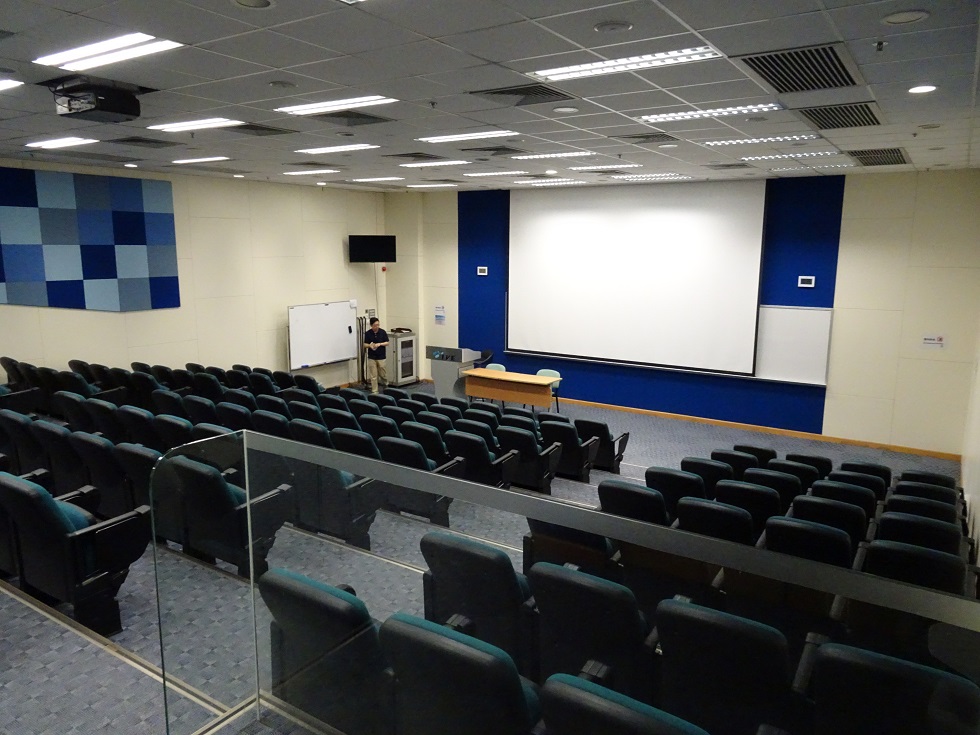
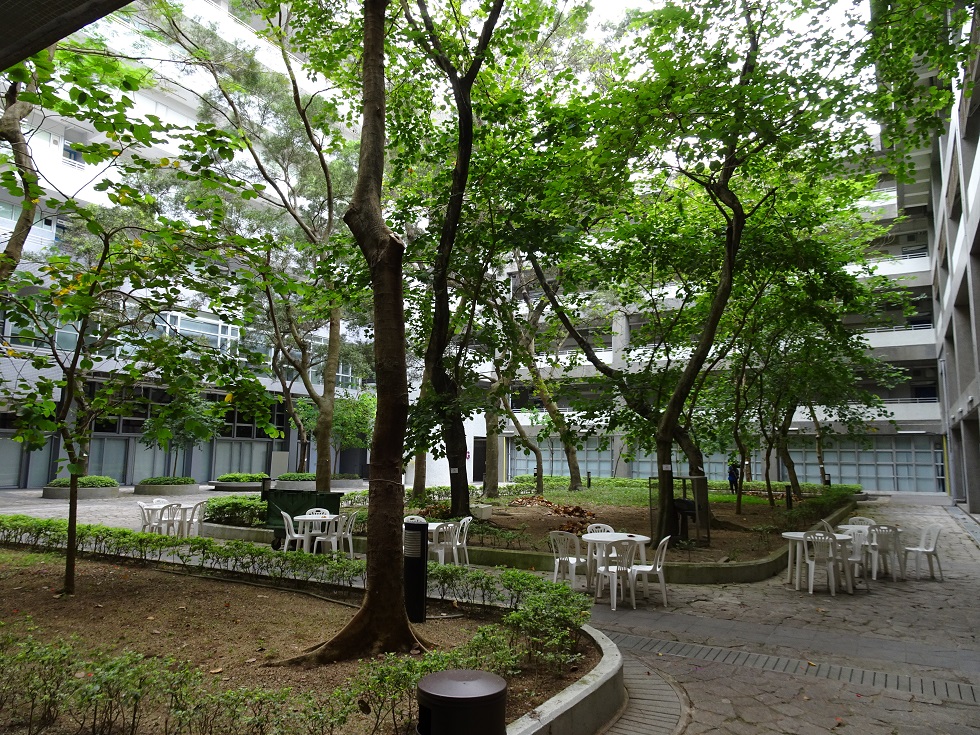
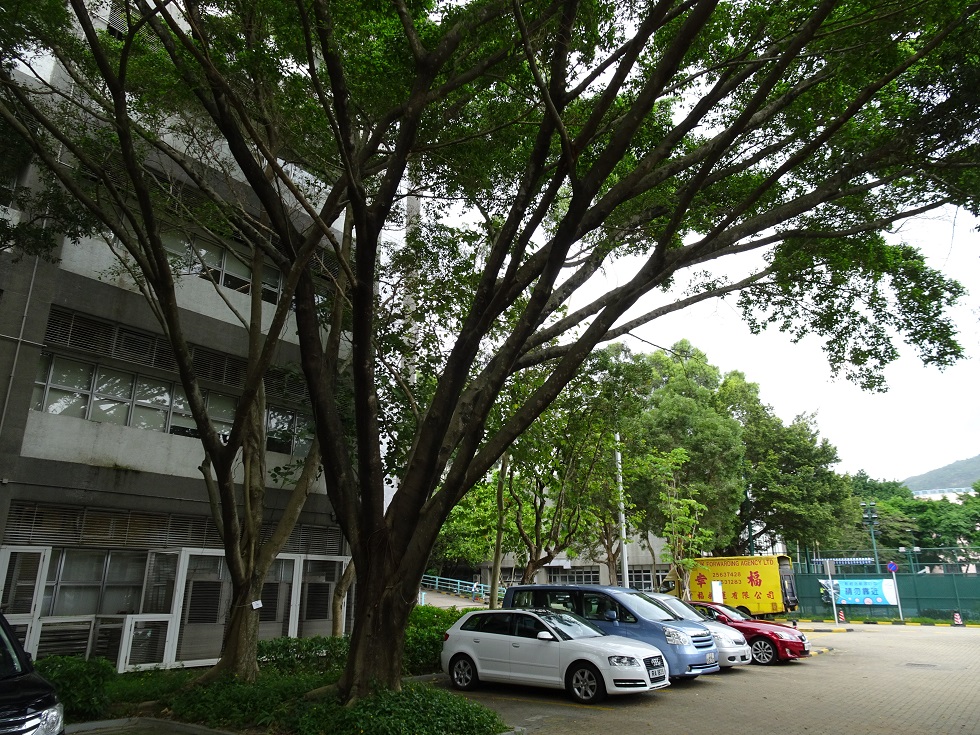
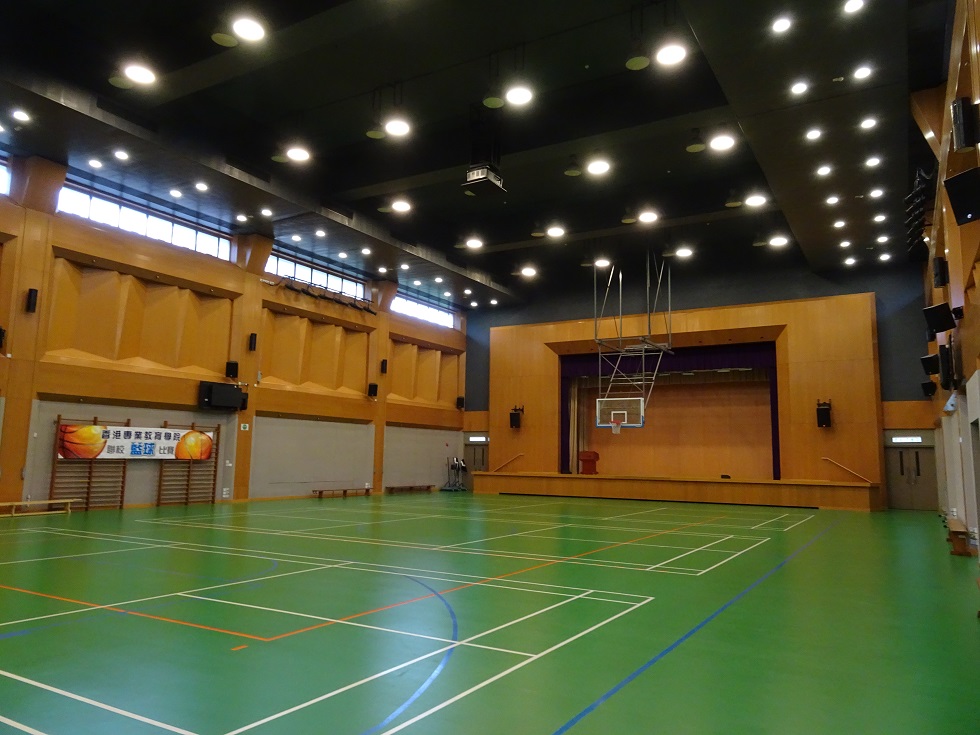
Transportation Options
By Car
During the summit, IVE will be holding their regular daily classes. Therefore, parking is not available at IVE during the conference. For those who are driving to the conference, parking is available nearby at the Wo Che Carpark. This is a 10 minute walk from IVE. Here is a google link for this car park.
By MTR
The Fo Tan MTR is the closest MTR station for the summit venue.
Walking Directions from the Fo Tan MTR Station
Register for Summit Attendance
We are currently accepting registrations for the summit. Please take note of the early registration discounts, previous attendee discounts, as well as discounts for members of certain organizations. Furthermore, please note that online registration and payment is also available.
Online Registration
During online registration, if you are entitled to a discount as a previous attendee, a member of HKILA or ISA, or a full-time student, at checkout, use the following “coupon code” to receive the related discount. This code should be entered where you see: “Have a Promotional Code?” on the checkout page.
Discount Codes for full 3 day attendance:
Previous Attendee’s should enter “previous3”
Membership Holders should enter “member3”
Full-time Students should enter “student3”
Discount Codes for 1 day attendance:
Previous Attendee’s should enter “previous1”
Membership Holders should enter “member1”
Full-time Students should enter “student1”
A friendly reminder that you must submit documentary proof of the above by email after you have completed online registration and payment.
Sponsorship Opportunities
Most of the sponsorship opportunities have already been reserved by companies. The currently available sponsorship option is the USB Pen. Contact us before October 31st if you want to sponsor. Please contact us with your interest: [email protected]
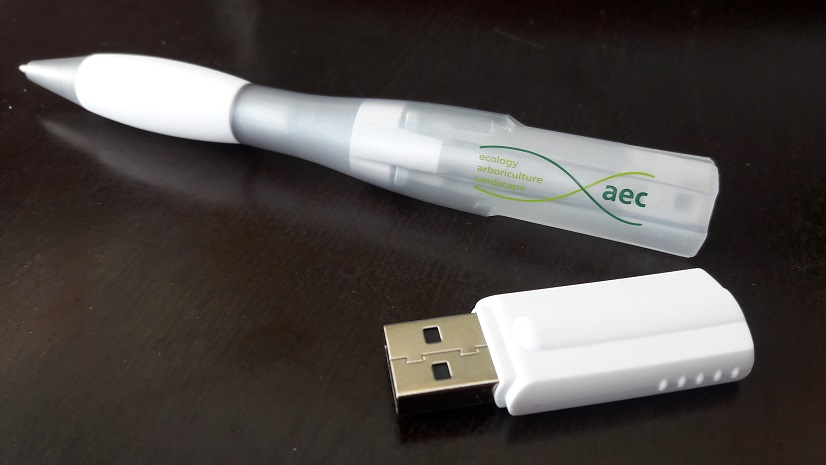
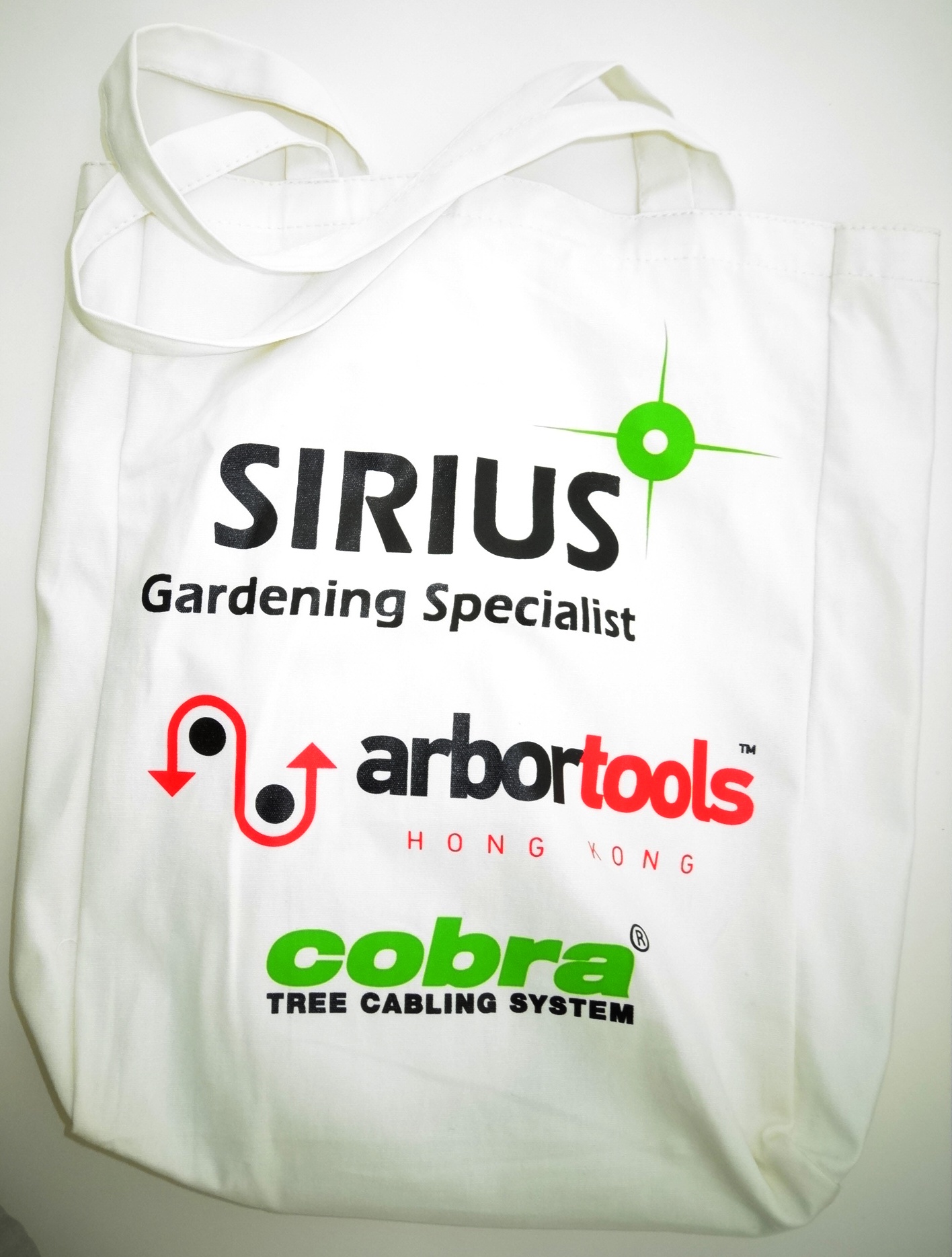
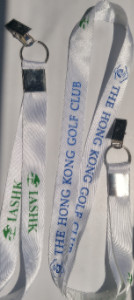
Call for Papers
Currently the call for papers is now closed as we have filled the lecture time for the three day conference. We do encourage you to contact us for our spring program or next year’s November program. [email protected]
